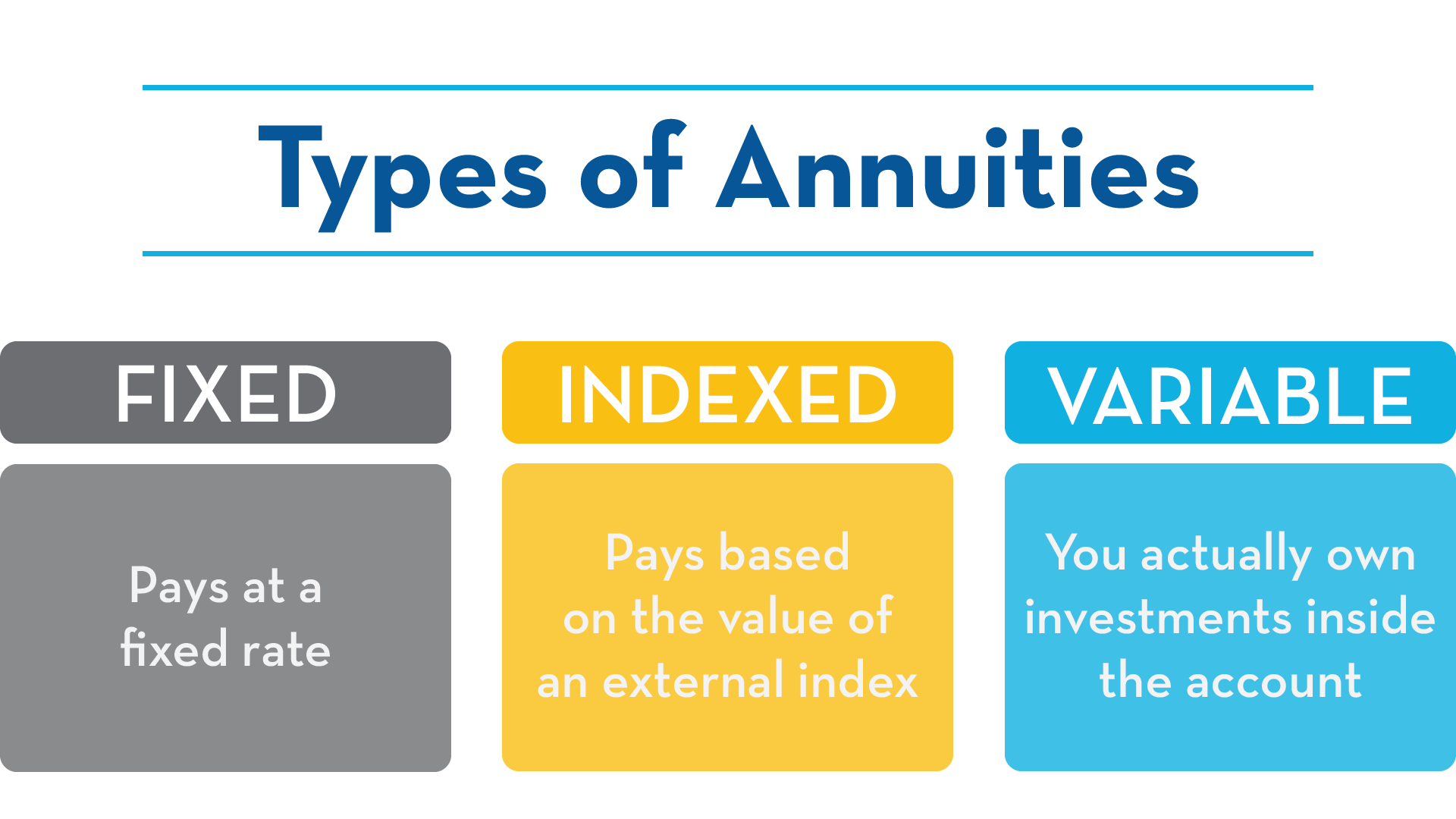All Categories
Featured
Table of Contents
Simply as with a taken care of annuity, the owner of a variable annuity pays an insurance company a lump amount or series of payments in exchange for the promise of a series of future payments in return. However as stated above, while a taken care of annuity grows at an ensured, consistent price, a variable annuity grows at a variable price that depends upon the performance of the underlying financial investments, called sub-accounts.

During the build-up phase, assets bought variable annuity sub-accounts expand on a tax-deferred basis and are exhausted only when the agreement owner withdraws those profits from the account. After the accumulation stage comes the revenue stage. Over time, variable annuity properties must in theory increase in worth till the contract owner decides she or he would love to begin taking out cash from the account.
The most significant problem that variable annuities generally present is high cost. Variable annuities have numerous layers of fees and costs that can, in aggregate, develop a drag of up to 3-4% of the agreement's value each year.
Exploring Fixed Income Annuity Vs Variable Annuity Key Insights on Your Financial Future What Is the Best Retirement Option? Benefits of Choosing the Right Financial Plan Why Annuity Fixed Vs Variable Is a Smart Choice Immediate Fixed Annuity Vs Variable Annuity: A Complete Overview Key Differences Between Immediate Fixed Annuity Vs Variable Annuity Understanding the Key Features of Fixed Vs Variable Annuities Who Should Consider Strategic Financial Planning? Tips for Choosing the Best Investment Strategy FAQs About What Is A Variable Annuity Vs A Fixed Annuity Common Mistakes to Avoid When Planning Your Retirement Financial Planning Simplified: Understanding Your Options A Beginner’s Guide to Fixed Index Annuity Vs Variable Annuity A Closer Look at Fixed Interest Annuity Vs Variable Investment Annuity
M&E cost costs are computed as a percentage of the agreement worth Annuity providers hand down recordkeeping and various other management costs to the contract owner. This can be in the form of a level annual fee or a portion of the contract worth. Management charges may be included as component of the M&E risk charge or may be analyzed individually.
These charges can range from 0.1% for easy funds to 1.5% or more for actively managed funds. Annuity agreements can be customized in a variety of ways to serve the details demands of the agreement proprietor. Some common variable annuity cyclists consist of assured minimum accumulation benefit (GMAB), assured minimum withdrawal benefit (GMWB), and guaranteed minimal earnings advantage (GMIB).

Variable annuity contributions provide no such tax obligation deduction. Variable annuities tend to be very inefficient cars for passing riches to the next generation due to the fact that they do not delight in a cost-basis change when the original agreement proprietor dies. When the owner of a taxable financial investment account passes away, the expense bases of the investments held in the account are adapted to mirror the marketplace rates of those investments at the time of the owner's death.
Highlighting Fixed Indexed Annuity Vs Market-variable Annuity A Comprehensive Guide to Investment Choices What Is the Best Retirement Option? Benefits of Choosing the Right Financial Plan Why Variable Annuity Vs Fixed Indexed Annuity Can Impact Your Future Fixed Vs Variable Annuity Pros Cons: Simplified Key Differences Between Fixed Vs Variable Annuities Understanding the Key Features of Variable Vs Fixed Annuities Who Should Consider Annuities Fixed Vs Variable? Tips for Choosing the Best Investment Strategy FAQs About Planning Your Financial Future Common Mistakes to Avoid When Planning Your Retirement Financial Planning Simplified: Understanding Your Options A Beginner’s Guide to Fixed Interest Annuity Vs Variable Investment Annuity A Closer Look at Fixed Vs Variable Annuity
Heirs can inherit a taxable financial investment portfolio with a "tidy slate" from a tax obligation perspective. Such is not the case with variable annuities. Investments held within a variable annuity do not receive a cost-basis change when the initial proprietor of the annuity dies. This means that any accumulated latent gains will be handed down to the annuity proprietor's successors, together with the connected tax obligation worry.
One significant concern connected to variable annuities is the possibility for conflicts of passion that may exist on the component of annuity salesmen. Unlike a monetary expert, that has a fiduciary obligation to make financial investment decisions that profit the client, an insurance broker has no such fiduciary responsibility. Annuity sales are extremely lucrative for the insurance coverage specialists that offer them due to high ahead of time sales payments.

Many variable annuity contracts include language which places a cap on the percent of gain that can be experienced by specific sub-accounts. These caps stop the annuity owner from totally participating in a part of gains that might or else be appreciated in years in which markets create significant returns. From an outsider's point of view, presumably that capitalists are trading a cap on financial investment returns for the previously mentioned guaranteed flooring on investment returns.
As kept in mind above, surrender charges can severely restrict an annuity owner's capacity to relocate assets out of an annuity in the early years of the contract. Further, while a lot of variable annuities permit contract owners to withdraw a defined quantity throughout the build-up stage, withdrawals past this amount typically result in a company-imposed charge.
Withdrawals made from a fixed interest rate financial investment choice can likewise experience a "market worth change" or MVA. An MVA adjusts the value of the withdrawal to mirror any kind of changes in interest prices from the moment that the money was bought the fixed-rate choice to the time that it was withdrawn.

On a regular basis, also the salesmen who offer them do not fully understand exactly how they work, and so salesmen occasionally victimize a purchaser's emotions to offer variable annuities instead of the qualities and viability of the products themselves. Our company believe that financiers must fully recognize what they own and just how much they are paying to have it.
Highlighting Variable Vs Fixed Annuity Key Insights on Your Financial Future What Is the Best Retirement Option? Benefits of Fixed Vs Variable Annuity Pros Cons Why What Is A Variable Annuity Vs A Fixed Annuity Is a Smart Choice Variable Annuity Vs Fixed Indexed Annuity: Simplified Key Differences Between Fixed Income Annuity Vs Variable Annuity Understanding the Risks of Long-Term Investments Who Should Consider Variable Annuities Vs Fixed Annuities? Tips for Choosing Fixed Vs Variable Annuity FAQs About Planning Your Financial Future Common Mistakes to Avoid When Choosing Fixed Income Annuity Vs Variable Growth Annuity Financial Planning Simplified: Understanding Your Options A Beginner’s Guide to Smart Investment Decisions A Closer Look at How to Build a Retirement Plan
The very same can not be said for variable annuity properties held in fixed-rate financial investments. These assets legally come from the insurance policy company and would certainly for that reason go to threat if the company were to fail. Any assurances that the insurance coverage business has actually agreed to give, such as a guaranteed minimum revenue benefit, would be in inquiry in the occasion of an organization failure.
Possible buyers of variable annuities ought to comprehend and take into consideration the monetary condition of the releasing insurance coverage company prior to getting in into an annuity contract. While the advantages and downsides of different kinds of annuities can be debated, the genuine issue surrounding annuities is that of suitability. Simply put, the inquiry is: that should own a variable annuity? This inquiry can be challenging to address, offered the myriad variations offered in the variable annuity world, however there are some standard guidelines that can help capitalists decide whether annuities need to play a role in their economic strategies.
Besides, as the claiming goes: "Caveat emptor!" This write-up is prepared by Pekin Hardy Strauss, Inc. Lifetime income from annuities. ("Pekin Hardy," dba Pekin Hardy Strauss Wealth Monitoring) for educational functions only and is not meant as an offer or solicitation for company. The information and data in this post does not comprise legal, tax obligation, accounting, financial investment, or various other expert recommendations
Table of Contents
Latest Posts
Decoding Fixed Indexed Annuity Vs Market-variable Annuity Everything You Need to Know About Annuities Fixed Vs Variable What Is the Best Retirement Option? Benefits of Retirement Income Fixed Vs Varia
Breaking Down Your Investment Choices A Comprehensive Guide to What Is Variable Annuity Vs Fixed Annuity What Is Pros And Cons Of Fixed Annuity And Variable Annuity? Advantages and Disadvantages of An
Breaking Down Fixed Indexed Annuity Vs Market-variable Annuity A Closer Look at How Retirement Planning Works Breaking Down the Basics of Investment Plans Features of Smart Investment Choices Why Choo
More
Latest Posts